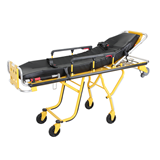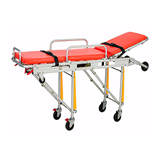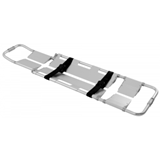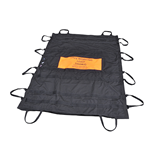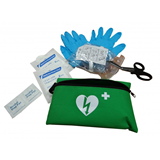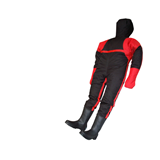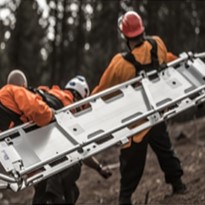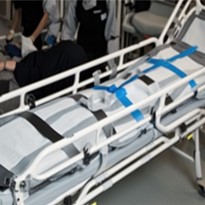In emergency response scenarios, the role of rescue stretchers cannot be overstated. These critical tools serve as a lifeline for both victims and first responders, ensuring the safe and efficient transfer of injured individuals to medical facilities. Over the years, advancements in rescue stretcher technology have played a pivotal role in enhancing the effectiveness of rescue operations. In this article, we delve into the innovative strides made in rescue stretcher design and functionality, focusing on objective and informative insights that can benefit professionals in the field.
I. Integration of GPS and Tracking Systems for Enhanced Safety
A. Explanation of how GPS integration enhances the safety of rescue operations.
- GPS (Global Positioning System) integration within rescue stretchers has revolutionized the way responders navigate and execute operations in challenging environments. By leveraging GPS technology, these stretchers can precisely determine their location, providing a valuable reference point in situations where traditional landmarks may be absent or obscured. This capability ensures that responders can efficiently reach their destination, reducing the risk of getting lost in unfamiliar terrain.
B. Benefits of real-time tracking and location data for responders.
- Real-time tracking is a pivotal feature enabled by GPS integration. It allows incident commanders and rescue teams to monitor the precise location of stretchers and their occupants in real-time. This level of visibility enhances situational awareness, enabling responders to make informed decisions swiftly. Furthermore, it aids in the coordination of multiple teams operating in a rescue scenario, promoting efficient resource allocation and teamwork.
C. Technical details of GPS and tracking system integration.
- The technical underpinnings of GPS integration in rescue stretchers involve the utilization of satellite signals to triangulate the stretcher's position. These systems typically consist of GPS receivers, which communicate with satellites, and onboard software for data processing. The collected data, including latitude, longitude, altitude, and timestamp, is transmitted to a central monitoring station via secure channels. Encryption and authentication measures are often employed to safeguard the integrity and privacy of this critical information.
II. Incorporating Telematics for Remote Monitoring and Communication
Telematics technology has become a crucial component in the realm of rescue stretcher innovation. By seamlessly integrating telematics systems, these stretchers are now equipped with advanced capabilities that significantly enhance their effectiveness in emergency situations. In this section, we will delve into the key aspects of telematics technology and how it revolutionizes rescue stretcher functionality.
A. Overview of Telematics Technology and Its Relevance to Rescue Stretchers
- Telematics, in the context of rescue stretchers, refers to the utilization of wireless communication and data transmission systems.
- These systems enable real-time data collection, analysis, and remote control of stretcher functions.
- The relevance of telematics lies in its ability to bridge the gap between on-site responders and off-site medical professionals.
B. How Telematics Enables Remote Monitoring of Vital Signs and Conditions
- Telematics-equipped stretchers are equipped with sensors and devices that monitor vital signs such as heart rate, blood pressure, and temperature.
- Data collected from these sensors is transmitted in real-time to remote medical professionals.
- Remote monitoring allows for early detection of critical changes in a patient's condition, enabling rapid intervention.
C. Communication Features and Their Impact on Coordination During Rescues
- Telematics systems include two-way communication capabilities, facilitating seamless communication between on-site responders and off-site medical experts.
- This communication ensures that crucial information is shared promptly, aiding in decision-making and treatment planning.
- Coordination is improved, leading to more efficient and effective rescue operations.
III. Foldable and Compact Designs for Easy Storage and Transport
Another significant innovation in rescue stretcher technology is the development of foldable and compact designs. These designs have transformed the way rescue stretchers are stored, transported, and deployed in emergency situations.
A. Importance of Compact Design in Rescue Stretcher Technology
- Compact stretcher designs are crucial for saving valuable space in emergency vehicles and storage facilities.
- They allow for easier maneuverability in tight spaces, such as confined rescue environments.
- Compactness ensures that rescue stretchers can be readily available when needed without hindrance.
B. Advantages of Foldable and Portable Stretcher Models
- Foldable stretcher models are designed to be easily collapsible and transportable.
- They reduce the physical footprint of stretchers during transport and storage.
- Portable models are lightweight and can be carried by a single responder, enhancing mobility.
C. Considerations for Storage and Transportation in Rescue Operations
- Proper storage and transportation of rescue stretchers are essential to maintain their functionality and longevity.
- Considerations include securing stretchers to prevent damage during transit and ensuring quick access in emergency vehicles.
- Foldable and compact designs align with these considerations, optimizing stretcher management
IV. Advances in Materials for Improved Durability and Weight Reduction
A. Discussion on the Role of Materials in Rescue Stretcher Innovation
In the realm of rescue stretcher technology, the choice of materials plays a pivotal role in determining the effectiveness and reliability of these critical life-saving devices. Over the years, advancements in materials science have led to significant improvements in both durability and weight reduction. In this section, we delve into the critical role that materials play in the innovation of rescue stretchers.
- Foundational Importance of Materials
Materials are the building blocks of any rescue stretcher. The choice of materials impacts not only the overall strength and longevity of the stretcher but also its weight and portability. In high-stress rescue scenarios, the reliability of the stretcher is paramount, making material selection a primary consideration.
- Durability and Sturdiness
The rigors of rescue operations demand that stretchers withstand harsh environmental conditions and rough handling. Traditionally, stretchers were constructed using materials like steel, which offered exceptional durability but came with a substantial weight penalty. However, modern materials have opened up new possibilities for balancing durability and weight.
B. Benefits of Lightweight Materials for Ease of Handling
Lightweight materials have revolutionized the world of rescue stretchers, making them significantly more maneuverable and user-friendly. This section outlines the advantages of employing lightweight materials in stretcher design.
- Enhanced Maneuverability
One of the primary benefits of lightweight materials is the ease with which rescue stretchers can be maneuvered in challenging environments. Rescuers often have to navigate through confined spaces, uneven terrain, or cramped quarters, and the reduced weight of modern materials allows for greater agility.
- Reduced Fatigue
When rescue operations extend over extended periods, the weight of traditional stretchers can lead to responder fatigue. The adoption of lightweight materials lessens the physical strain on rescuers, enabling them to maintain their energy levels and effectiveness during critical missions.
- Faster Response Times
Lightweight stretchers can be deployed more quickly in emergency situations. The reduced weight simplifies transportation, enabling swift response times that can be crucial in life-or-death scenarios.
C. Examples of Cutting-Edge Materials Used in Modern Stretcher Construction
To illustrate the practical application of advanced materials in modern rescue stretcher technology, let's explore some examples of cutting-edge materials that have been integrated into the construction of these vital tools.
- Carbon Fiber Composites
Carbon fiber composites are celebrated for their exceptional strength-to-weight ratio. These materials are increasingly being used in stretcher frames, providing a sturdy yet lightweight foundation for rescue operations. Carbon fiber's resistance to corrosion and high fatigue strength make it an ideal choice for long-lasting stretcher construction.
- High-Strength Polymers
High-strength polymers, such as ultra-high-molecular-weight polyethylene (UHMWPE), are gaining prominence in stretcher design. These polymers are not only lightweight but also exhibit impressive impact resistance, ensuring the stretcher can withstand the rigors of challenging rescue environments.
- Aluminum Alloys
Aluminum alloys have been a staple in lightweight construction for decades. Their malleability allows for intricate and ergonomic stretcher designs, while their corrosion resistance ensures longevity. Aluminum alloy stretchers strike a balance between weight reduction and durability.
- Titanium
Titanium, known for its exceptional strength and corrosion resistance, is finding its way into advanced rescue stretcher designs. While it may be pricier than other materials, its unique combination of properties makes it an attractive choice for specialized rescue applications.
- Kevlar Reinforcements
Kevlar, famous for its use in ballistic protection, is now being employed as reinforcement in stretcher fabric. This enhances the stretcher's resistance to tearing and abrasion while keeping weight in check.
These examples demonstrate the diverse array of materials that modern rescue stretcher manufacturers have at their disposal. The careful selection of materials allows for the customization of stretchers to suit specific rescue scenarios and requirements, ultimately improving their functionality and reliability.
V. Emerging Trends in Rescue Stretcher Designs and Features
A. Exploration of Recent Trends Shaping the Future of Rescue Stretcher Technology
In an ever-evolving field like rescue stretcher technology, staying abreast of emerging trends is crucial. This section explores the latest developments that are shaping the future landscape of rescue stretcher design and features.
- Modularity and Customization
Modern rescue stretchers are increasingly designed with modularity in mind. This trend allows responders to customize stretchers to meet the specific needs of a given rescue mission. Modules for patient support, harness systems, and equipment attachments can be interchanged as needed.
- Adjustable Configurations
Adjustable stretcher configurations have gained popularity due to their versatility. Rescuers can adapt the stretcher to accommodate patients of various sizes or medical conditions, ensuring optimal patient care.
- Ergonomic Design for Rescuer Comfort
Ergonomics plays a pivotal role in recent stretcher innovations. Responders often have to carry stretchers over long distances or through challenging environments. Ergonomically designed stretchers reduce the physical strain on rescuers, promoting their comfort and effectiveness.
- Telematics Integration
Telematics systems, discussed earlier in this article, are being integrated directly into stretcher designs. This allows for real-time monitoring of patient vital signs, GPS tracking, and communication capabilities, further enhancing the effectiveness of rescue operations.
B. Analysis of Innovative Features Such as Adjustable Configurations and Ergonomic Design
In this subsection, we take a closer look at two innovative features—adjustable configurations and ergonomic design—that are gaining traction in the field of rescue stretcher technology.
- Adjustable Configurations
Adjustable stretcher configurations are designed to cater to a diverse range of patient needs. They often feature telescoping frames, allowing for length adjustments. Some stretchers can also be widened or narrowed, providing flexibility in accommodating patients of varying sizes.
- Ergonomic Design
The incorporation of ergonomic principles into stretcher design is transforming the comfort and efficiency of rescue operations. Features such as padded handles, adjustable height settings, and ergonomic grips reduce the physical strain on responders and contribute to smoother rescues.
C. Considerations for Adapting to Evolving Rescue Scenarios and Needs
As rescue scenarios evolve and become increasingly complex, stretcher technology must adapt accordingly. This subsection outlines key considerations for manufacturers and responders alike to ensure that stretcher designs meet the evolving demands of modern rescue operations.
- Multi-Functionality
Stretcher designs should prioritize multi-functionality, allowing for the seamless integration of additional equipment or accessories as needed. This adaptability ensures that stretchers remain versatile tools in diverse rescue situations.
- Compatibility with Advanced Medical Equipment
Given the advancements in medical technology, rescue stretchers should be designed with compatibility in mind. This includes provisions for securing advanced monitoring equipment and life-support systems.
- Interoperability
In scenarios involving multiple agencies or organizations, stretcher designs should consider interoperability with existing rescue infrastructure and equipment. This ensures a smooth coordination of efforts during joint operations.
In conclusion, innovations in rescue stretcher technology have significantly enhanced the effectiveness and safety of emergency response and rescue operations. These innovations include the integration of GPS and tracking systems, the incorporation of telematics for remote monitoring and communication, the development of foldable and compact designs, and advancements in materials for improved durability and weight reduction.


